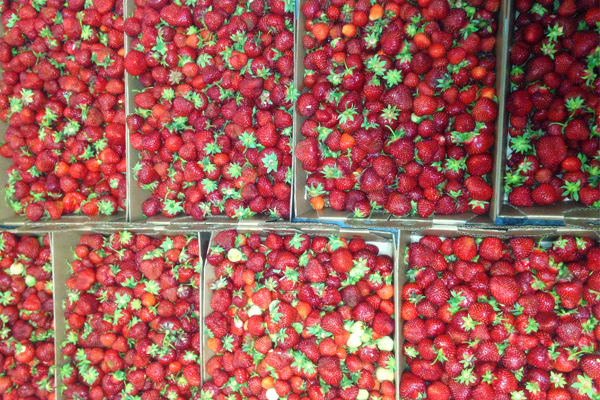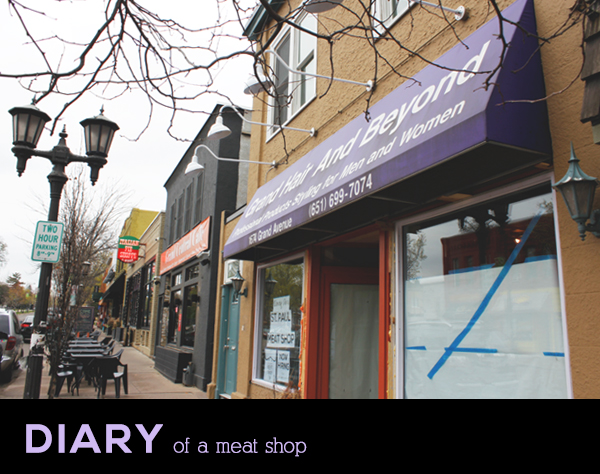 In our humble little cheese shops, we’re not trying to change the world. We’re simply trying, the best we know how, to make scrumptious food and send you home with it. It's no coincidence, however, that one mission can accomplish both. A mission to support our endlessly dedicated farmers brings us the tastiest ingredients. A need to pay homage to the tastiest ingredients roots our cooking in tradition, simplicity, and the elegance of native-grown produce.
In our humble little cheese shops, we’re not trying to change the world. We’re simply trying, the best we know how, to make scrumptious food and send you home with it. It's no coincidence, however, that one mission can accomplish both. A mission to support our endlessly dedicated farmers brings us the tastiest ingredients. A need to pay homage to the tastiest ingredients roots our cooking in tradition, simplicity, and the elegance of native-grown produce.
Think about the last time you ate a fresh garden tomato or a summer strawberry. Maybe you’re naturally green-thumbed and have had the pleasure of growing it yourself. Was it so juicy that it seemed to spring a leak when you bit into it? Did its deep ruby shade and bright, bursting flavor beg you to enjoy the moment just a second longer? Perhaps it caused an involuntary “mmm…” or “whoa!” to escape your lips. Now compare it to its cloned, out-of-season grocery store counterpart. Maybe the inside was white and spongy or mealy, like it was part edible sand. Maybe there was simply nothing lovely enough about it to be memorable at all.
If we can agree on the beauty and intense flavor of a tomato and a strawberry at their most delicious, we certainly don’t need to ask the question, “Why local?” It isn’t surprising that something grown near us, picked at its peak of ripeness, sugar development, and water retention, packed carefully and driven across town to be used in the following days (not weeks or months) is overwhelmingly more delightful than the alternative. I think I’d be bruised, battered, and lifeless after an international flight, too. A walk around the block is much simpler.

The massive and obvious difference between homegrown fare and the shipped-in variety inspires all kinds of wonder. A small, but palpable phenomenon occurs every time we infiltrate the Cheese Shop kitchen with any neighborhood-procured bounty. Mouths water at the sight of dazzling beet jewels. Questions abound watching garlic scapes being snake-coiled inside pickling jars. Ideas trickle in from unlikely sources and grandmother’s recipes long forgotten. Hilariously-shaped irregular carrots make the rounds to give everyone a snicker. The entire staff anxiously awaits spring greens as their memories of last year's spicy greens already fading like a wispy dream. Text messages proclaiming, “These strawberries are BLOWING MY MIND. They are so red all the way through!”, and the shock and awe of a significant other noticing, “This celery tastes salty and… green? Normal celery tastes like crunchy water.”
It’s hard not to love the people and communities who work tirelessly to bring us such delight. They are often covered in dirt, dressed like camp counselors, a little stinky and sweaty, and smiling from ear to ear when they appear in our kitchen. The pride in offering their life’s work in a cardboard box and sharing it with their community is contagious. It is impossible to say no to the prettiest kale or butter lettuce when it's presented by the guy who tended and picked it. And how could we not order bushels of peaches by faxing an order form and deposit to a farm that still does mail-order?
Our dedication to capitalizing on the heartbreakingly-short Minnesota growing season isn’t always all warm fuzzies and happy days, though. It typically means hard work and long hours. When ripe tomatoes hit and can’t wait patiently for our attention, we bring in hundreds of pounds a day to can, stew, roast, dry, and purée. Then we play Freezer Tetris to try to store it all for use in our roasted tomato risotto throughout the fall. Cases upon cases of Honeycrisp apples overtake our walk-in coolers, prep spaces, hallways, and lives as we feature them in house-made strudel or a signature honey, blue cheese, and apple sandwich, and pair them with cheese plates. Occasionally, you’ll hear the distant mad cackling of a kitchen employee who’s putting away the world’s silliest-looking pile of rhubarb or someone asking, “Are you absolutely sure you want to order $500 worth of ramps?!”
Anyone who’s tried gardening and growing, whether on a small or large scale, can sympathize with how frustrating, back-breaking, and rewarding it is. The committed individuals we’ve gotten to know over the years, not picking machines or shipping companies, are trading their time and energy for your delicious plate. Let’s enjoy it, and thank them by acknowledging (and paying for) the difference between a December tomato and a backyard beauty.
*At the France 44 Cheese Shop, the St Paul Cheese Shop, and the St Paul Meat Shop, you’ll find local produce featured in every way possible, and pick up a local fruit pie every Friday in the Meat Shop!
**Special thanks to Afton Orchards, Stone’s Throw Farms & Shared Ground Farmer’s Cooperative, Hidden Stream, and the Minneapolis, Kingsfield, and Fulton Farmer’s Markets
 Forget the Dog Days of [Minnesota] Summer. We've got GOAT. As the sun scorches down in the Midwest and outdoor activities reach their screaming peak (hello, Minnesota State Fair!), is there really a better animal to ring in the final month of summer than a frolicking baby goat? Here at the France 44 - St. Paul Cheese Shops, we're totally torqued to take advantage of the weather and produce and sandy beaches of August, all with a little tangy goat cheese by our side.
Forget the Dog Days of [Minnesota] Summer. We've got GOAT. As the sun scorches down in the Midwest and outdoor activities reach their screaming peak (hello, Minnesota State Fair!), is there really a better animal to ring in the final month of summer than a frolicking baby goat? Here at the France 44 - St. Paul Cheese Shops, we're totally torqued to take advantage of the weather and produce and sandy beaches of August, all with a little tangy goat cheese by our side.





